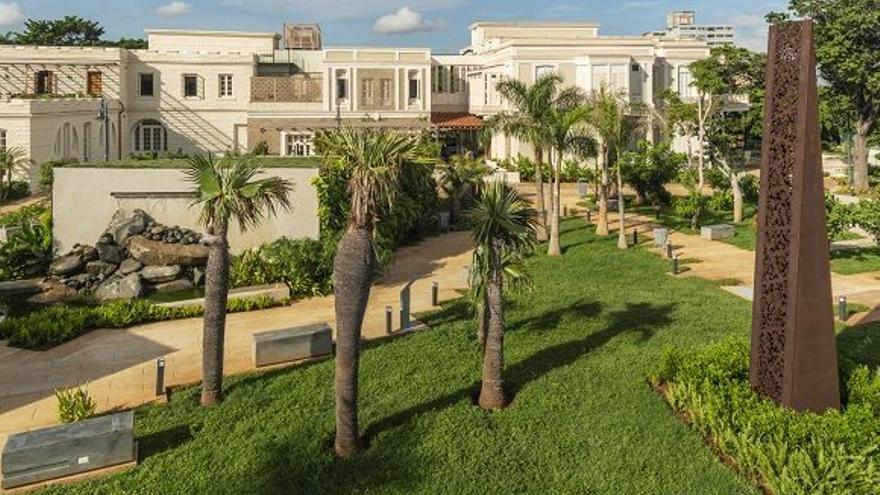
![]() 14ymedio, Luz Escobar, Havana, 2 December 2021 — The amount of investment made by the Cuban Government in the brand new Fidel Castro Ruz Center, in Havana’s Vedado district, whose works were in charge of the Office of the Historian of Havana (OHCH), is a mystery that has no signs of being revealed. “And even if it does come out, it will be very opaque, the final number will never come out,” a young architect with knowledge of the subject and who prefers anonymity tells 14ymedio.
14ymedio, Luz Escobar, Havana, 2 December 2021 — The amount of investment made by the Cuban Government in the brand new Fidel Castro Ruz Center, in Havana’s Vedado district, whose works were in charge of the Office of the Historian of Havana (OHCH), is a mystery that has no signs of being revealed. “And even if it does come out, it will be very opaque, the final number will never come out,” a young architect with knowledge of the subject and who prefers anonymity tells 14ymedio.
However, the professional is sure of something: “There were excesses.” As an example, he says that “they spent a lot on paving stones that later they didn’t use and they had to find where to put them.” That was the origin, he says, of the cobblestones with which they paved a part of the gardens of Avenida de los Presidentes, also known as Calle G, the central Calle Línea and other places, such as Calle A in several of its sections.
“All those paving stones came from there,” says the architect. “I remember when they finished the little interior paths of the house, that they had the pallets of pavers lying there, and boom, the solution was to remove the little grass separator from the Linea street divider.”
In the summer of 2020, several of these works raised a cloud of dust on social networks between architects and ordinary Havanans, by eliminating the characteristic green of those streets and replacing them with the gray of concrete.
So much so that the authorities had to come out to give explanations. The official version given at the time was that the replacement was made for “pedestrian safety” and thus removed “some dirt from the earth and grass on the street.”
The architect consulted by this newspaper also details that the Department of Rehabilitation and Heritage Conservation of the OHCH, directed by Norma Pérez-Trujillo, is the same group that is carrying out the restoration of the Santa Clara convent and that it will be in charge, soon, of the restoration in the Palace of the Revolution.
For “interior design and paneling,” he refers, they hired the services of private sector workers.
He says that all the landscaping of the Fidel Castro Ruz Center, as well as the proposal of trees and vegetation, was carried out by the specialists of the Botanical Garden. “The flower beds are very beautiful, in the style of the original El Vedado,” he says. “The trees that they put up respect the heights and other necessary characteristics, such as not giving off resins or that their leaves, fruits and seeds can damage the pavement. It is a pleasure to walk through there, if it were not for the aura that the building has as such,” he says sarcastically.
The Center was inaugurated last Thursday with a play by a children’s group and with the presence of Cuban government staff, along with Nicolás Maduro and Raúl Castro.
Although he specifically refused to answer a question about the cost of the opulent work posed by the international press, the head of Preservation of the Documentary Heritage of the Palace of the Revolution, Alberto Albariño, only said that a good part of the investment was covered with “donations received from other countries,” without detailing which, and that for that reason it did not involve a great expense for the State.
____________
COLLABORATE WITH OUR WORK: The 14ymedio team is committed to practicing serious journalism that reflects Cuba’s reality in all its depth. Thank you for joining us on this long journey. We invite you to continue supporting us by becoming a member of 14ymedio now. Together we can continue transforming journalism in Cuba.
